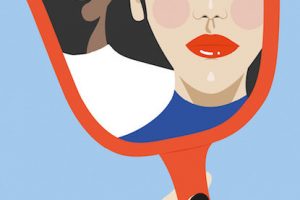Foam rollers are incredibly versatile fitness aids. They work by using the body’s natural response to pressure. A study published in the Journal of Strength and Conditioning research* found that foam rolling was an effective technique to increase range of motion in participants. In fact, only two minutes of foam rolling displayed an increased range in some muscle groups.
Myofascial release is a simple but effective way to release tense and tight muscles in my clients (and myself!). Rolling the foam cylinder under muscles groups that feel tender can not only improve muscle performance for a longer and more challenging workout but also speeds up recovery afterwards. Think of it as your own personal masseuse!
This kind of ‘rolling’ works as a self-myofascial release technique, which essentially means that it helps to reduce inflammation in the connective tissues of our muscles. These tissues can become restricted through exercise, or long periods of inactivity, which makes them much more prone to painful inflammation or injury during your workout.
So, how can you use the foam roller to get the most benefit?
1. When to foam roll?
Perform foam roller sessions when your muscles are warm or after a workout. Position the roller under the soft tissue area you want to release or loosen. Gently roll your body weight back and forth across the roller while targeting the affected muscle. For especially tight areas, applying constant pressure can sometimes work better than rolling back and forth. Slowing down your breathing pattern will help keep it smooth and aid relaxation as you stretch and massage out any tension.
2. The importance of breathing
There is more to breathing than meets the eye. Each time you pull air into your lungs, your diaphragm contracts, pressing down on your internal organs and blood vessels. As you exhale, new blood flows through your entire system and this helps to improve the elasticity of your muscles. Proper breathing while foam rolling increases circulation, relaxes the body and helps to flush out lactic acid buildup.
3. Don’t roll too hard
When stretching you need to be gentle, and don’t force it, no bouncing otherwise this could tear the muscle. If you’re experiencing tightness or tension in a particular area, you should spend plenty of time working on that part. Roll each muscle group for around two minutes or ten slow rolls. Spend some time and pause for a few seconds any particularly tight spots. When using a foam roller you might want to build up to moving in multiple directions this way, you will eventually feel the muscle release.
4. What areas should I foam roll?
Using the foam roller is a great way to give your muscles a deep tissue massage. By slowing rolling over various areas of your body, you’ll help break up adhesions and scar tissue and speed up the healing and recovery process after your workout. Use the roller to loosen up common areas of tightness such as your calves, hamstrings, glutes, iliotibial band (ITB), quadriceps, neck and upper back.
The Iliotibial band or ITB is a very tough band of connective tissue that when tight it can directly affect the alignment of the knee and hip and cause back pain. The ITB is generally the tightest muscle (so the most painful). To treat this area the roller needs to placed under the side of the thigh/hip, with that leg extended and the other knee bent and open with the foot flat on the floor. Start to roll the outside of the hip and thigh slowly, avoiding the knee. Use your arms and core to control the pressure. Breath continuously and enjoy the massage.
The quadriceps are often tight and this exercise can help keep them to be more flexible, improving both posture and performance in activities such as running, jumping, cycling or dancing. Foam rolling both the quadriceps and the Iliotibial bands can help improve function and motion of the knee and tracking of the patella (kneecap). Lie prone (facing the floor) with your thighs resting on the roller. Your upper body is supporting you in front and you are in a forearm plank position. Press the forearms into the floor/mat and engage the abdominals. Roll the thighs over the roller by walking the elbows forward and back and/or rocking gently. To target the inner and outer thighs (medial and lateral quadriceps) rotate the legs inwards and outwards. Avoid rolling over the knee joint. This is a great way to strengthen your arms, shoulders and core whilst releasing your thighs.
The calves are a common tight spot and an important area to stretch out as they can improve your gait and decrease tension in the legs, hips and back. These muscles can get tight from running, increased cardio sessions, high heels, flat shoes or biomechanical problems of the foot. To release the calves you want to rest the foam roller under one leg and use the upper body to support and control the pressure by lifting the hips and rolling the calves up and down. Start with the larger part of the muscle, moving on to the inner and outer part of the calve. Keep breathing throughout, aim for ten rolls, then repeat on the other side.
The hamstrings can easily become tight making it very difficult to touch your toes from standing or sitting. This tightness can have consequences elsewhere in the body and quickly lead to lower back tension. Try sitting on the roller, resting the back of your thighs and arms supporting you behind. As the roller moves down towards the knees, draw the abdominals in as you round the lower back to pull the hamstrings over the roller. To target the inner and outer hamstrings (medial and lateral hamstrings) rotate the legs inwards and outwards.
The Glutes hold a lot of tension, so try easing out tightness by sitting on the roller with both knees bent and the hand on the floor behind. Cross the right foot over the left knee and shift the weight on the roller to the right buttock. Slowly roll over the lower gluteal area between the sit bones and hip. This is a great way to release tension in the lower back and increase mobility in the hip joint. Spend time on the spots that feel particularly tender and breath as you roll. Repeat on the other side.









